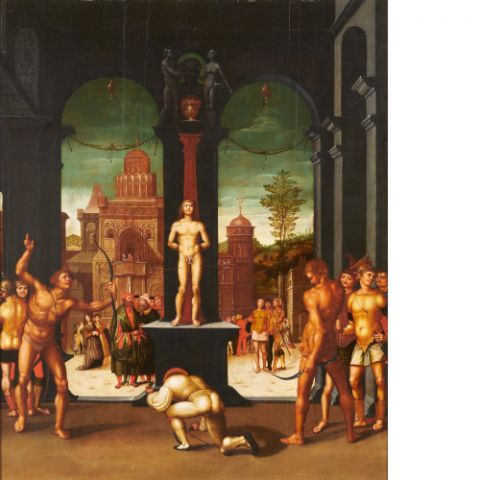
Lot 1164 | Forest Landscape
1842 Morges - 1921 Darmstadt
Title: Forest Landscape.
Technique: Oil on canvas.
Mounting: Laid down on card.
Measurement: 37 x 52cm.
Notation: Signed and dated at the bottom: Eugen Bracht / Turnagel 23 Sept. 62.
Frame/Pedestal: Framed.
Verso:
On the cardboard in pencil: "Terrain near Linththal / 1862".
Provenance:
Private ownership, Germany.
On a cloudy September morning, two men meet on the heath who could not be more different (lot 1162). One of them sits on a stone in an elegant white riding jacket and straw hat and smokes his pipe. He enjoys the nature after a long ride, meanwhile his horse grazes at the wayside. The second man, an older, thickly dressed shepherd, has joined him. Pleased to have a conversation partner, he engages the rider in conversation while his sheep line the horizon on the left edge of the picture. The thick wool of the animals fades into a white-gray cloud cover, which dramatically stretches across the heath landscape. Meanwhile, the cold hue of the clouds contrasts with the landscape, which in turn is warmly illuminated by the last rays of the sun. Here, the purple heather covers the warm yellow sandy soil like a soft carpet. The heath as a landscape and subject enjoyed great popularity in the 19th century and brought a breakthrough for the German artist Eugen Bracht. This rather sparsely vegetated landscape was popularized through his terrain and color studies. In these, Bracht combined topographical landscape sections with character figures, which he used primarily to set the mood. However, they not only function as a link between the viewer and the dramatically depicted nature, but can also be seen as so-called repoussoir figures. Behind the French word repoussoir - whose meaning can be equated with "to drive back" - is the art historical term for the use of an object placed in the foreground, which, through its enlarged representation and usually dark colouration in relation to the rest of the picture, has the effect of increasing the depth of the image. This artistic trick was popularly used in the 19th century as a romantic quotation for distant vision. In Eugen Bracht's later works, the romantic-narrative depictions increasingly ebb away. Instead, the focus is increasingly on luministic and atmospheric aspects. At the same time, the colour surface loosens up considerably and thus corresponds more to an Impressionist style. The gorge offered under lot 1164 shows a much smaller section of the picture, dominated by a brightly reflecting stone wall, while the forest behind it reflects the cool shadows of the trees through the dark colours. The jagged rocks are softened somewhat by the airy application of paint, while the bushy-looking mosses and shrubs create a smooth transition to the deep green firs. Meanwhile, the second work from this creative phase, depicting the Swiss stone pine landscape, has a much more abstract character (lot 1163). While the earthy ground is rendered in patchwork-like brown tones, the dark larch crowns bend in the stormy wind, creating not only an incredible depth through their repoussoir function, culminating in a snowy mountain peak, but also establishing a connection to the artist's early work.
We would like to thank Manfred Großkinsky, Karlsruhe, who confirmed the attribution of the present painting based on a high-resolution digital photograph.
Print this lot | Recommend lot |
Conditions of this Lot
32% buyer’s premium on the hammer price
Estimated shipping costs for this lot:
Germany: 31,93 Euro plus 6,07 Euro VAT
EU: 58,82 Euro plus 11,18 Euro VAT
Worldwide: 84,03 Euro plus 15,97 Euro VAT
additional shipping insurance
Eugen Bracht Germany Dresden School Karlsruher Malerschule 2nd half of 19th C. Paintings Forest Sketch Stones


